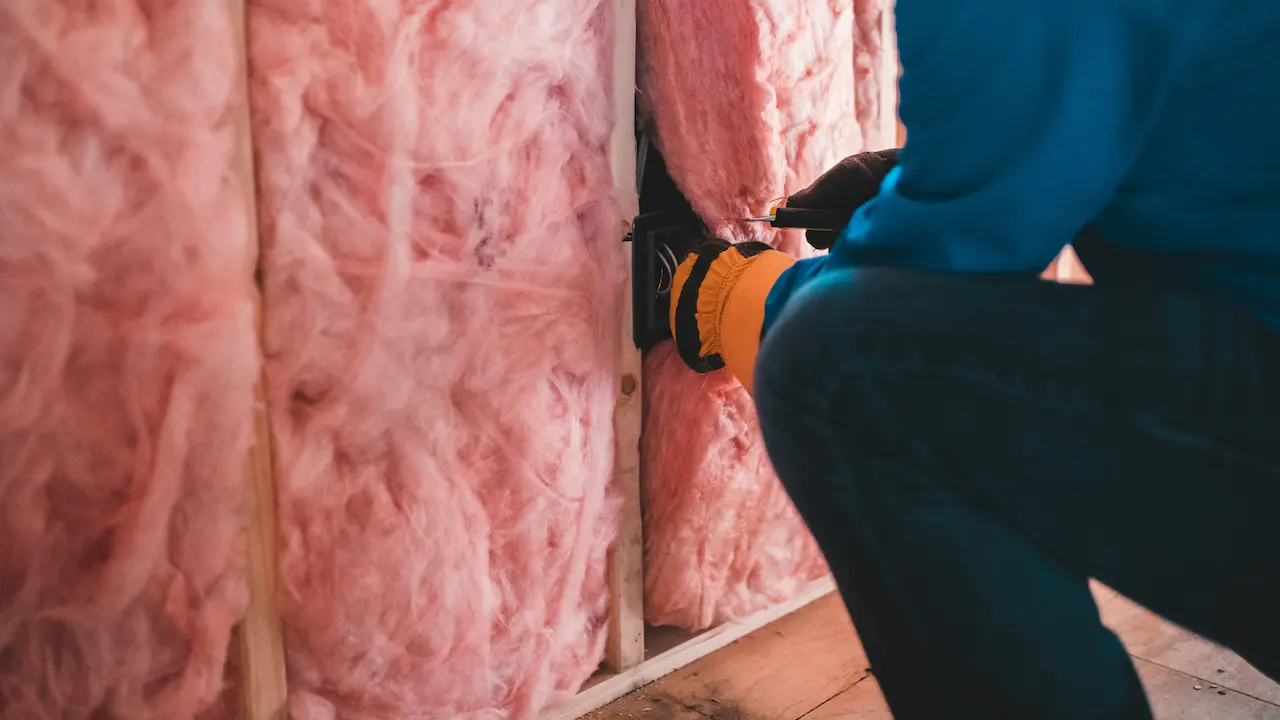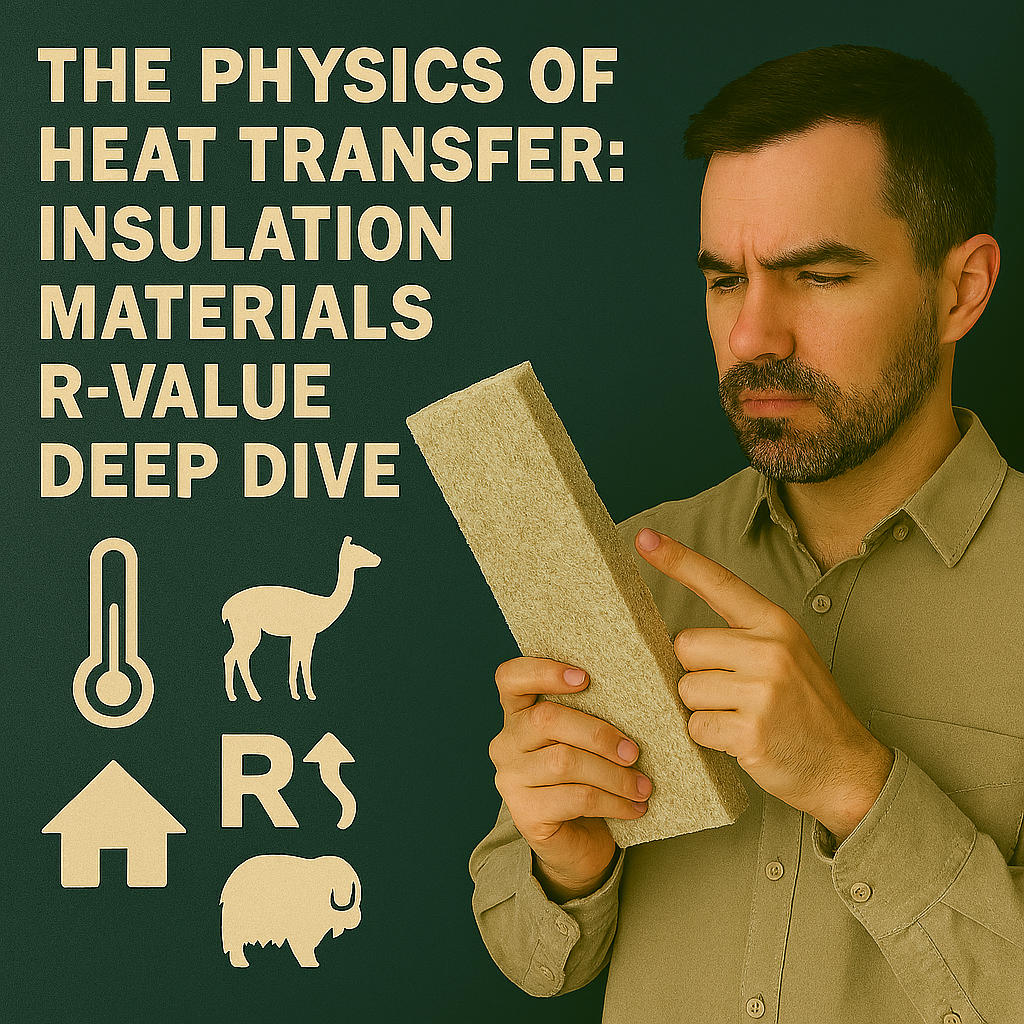🔥 Stop Losing Heat (and Money!): The Insulation R-Value Cheat Sheet Every Homeowner Needs
Picture this: It’s -10°C outside, and I’m huddled under three blankets in my “renovated” 1920s bungalow. My breath fogs the air. Why? Because I trusted fluffy pink insulation alone to save me. Big mistake. Turns out, R-value isn’t just a number—it’s your shield against physics itself. Let’s break down heat transfer like it’s hot gossip. 🔥
(Spoiler: I cut my heating bill by 40% after cracking this code. More on that later!)
🌡️ Heat Transfer 101: Your Home’s Invisible Energy Vampires
Heat doesn’t just “leave”—it escapes in three sneaky ways:
-
Conduction: Heat flowing through materials (like a spoon in hot tea).
-
Convection: Heat riding air currents (hello, drafty windows!).
-
Radiation: Heat zapping through space (your roof absorbing summer sun).

R-value measures how well insulation fights conduction—the main villain in walls and attics. Higher R-value = stronger defense!
❄️ My “aha” moment: My attic had R-19 fiberglass. DOE recommends R-49+ for my climate zone. No wonder I saw frost on my nails indoors!
📊 Insulation Showdown: The R-Value Per Inch Leaderboard
Not all insulation is created equal. Some pack mega R-value in thin layers; others need feet of fluff:
| Material | R-Value Per Inch | Cost Per Sq. Ft. | Best For | Cons |
|---|---|---|---|---|
| Aerogel | R-10.3 🏆 | $2.50+ | Space-constrained areas | Pricier than gold leaf 💸 |
| Closed-Cell Spray Foam | R-6.5 | $1.20-$1.50 | Walls, roofs, gaps | Off-gassing during install ☣️ |
| Sheep’s Wool | R-3.5-3.8 | $1.80 | Eco-warriors ♻️ | Can absorb moisture if wet 💧 |
| Fiberglass (Batts) | R-2.9-3.8 | $0.50-$0.80 | DIY attics & walls | Sags over time; itchy AF 😫 |
| Cellulose | R-3.2-3.8 | $0.80-$1.20 | Retrofits (blown-in) | Settles 20%; fire risk if damp 🔥 |
(Sources: DOE Insulation Guide, EPS Industry Alliance)
💡 The Dirty Secret: R-Value Alone is Not Enough
I learned this painfully after stuffing R-30 fiberglass into my walls—and still freezing. Why?
-
Thermal Bridging: Wood studs conduct heat 5x faster than insulation → cold streaks ❄️.
-
Air Gaps: A 4% gap slashes insulation performance by 50% (Building Science Corp).
-
Moisture Rot: Wet insulation loses R-value fast (fiberglass drops 50% when damp 💧).

Real-world fix: We added 1-inch foam sheathing (R-6.5) over studs before siding. Bye-bye, thermal bridges!
🔬 The Physics Deep Dive: Why Thickness ≠ Performance
R-value stacks mathematically:
-
Attic: Layer R-30 batts over existing R-19? Total = R-49 ✅
-
Walls: Stuffing 6 inches into a 4-inch cavity? Compression lowers R-value! 🚫
Pro tip: The DOE’s climate zone map dictates your minimum R-value:
-
Florida (Zone 1): Attic R-30
-
Minnesota (Zone 7): Attic R-60+
💰 Smart Upgrades: Where to Get the Most Bang for Your Buck
After wasting $1,200 on basement fiberglass (that got moldy!), I optimized:
-
Attic first: Heat rises! Air-seal + boost to R-60. (Saved 30% on heating)
-
Windows > Walls: Install storm windows (U-factor 0.30) before wall insulation.
-
Basement hack: Rigid foam boards (R-10) against concrete + fiberglass.
🌟 My ROI champ: Aerogel in rim joists. 1-inch strips (R-10) stopped arctic drafts. Worth every penny!
🌱 Eco-Insider Tip: The Carbon Math You Never Knew

-
Spray foam: High R-value but made from petrochemicals → 10x carbon footprint of cellulose (RMI)
-
Sheep’s wool: Carbon negative! Sheep regrow it annually.
-
Cellulose: 80% recycled paper; traps CO₂.
My compromise: Cellulose in attic, wool in walls.
🛠️ The Golden Rules of Insulation (No PhD Required!)
-
Seal before you insulate (caulk > fluffy stuff).
-
Mind the gaps → 95% coverage is useless if 5% is open.
-
Vapor barriers go WARM side (wrong placement = condensation disaster).
🌟 Final Thought: Insulation is Your Silent Superhero
It works 24/7—no cape needed. Nail your R-value strategy, and you’ll slash bills, boost comfort, and even muffle noisy neighbors. Now that’s physics paying rent!
🏡 Your turn: What’s your biggest insulation win or horror story? Spill below! 👇
References:

